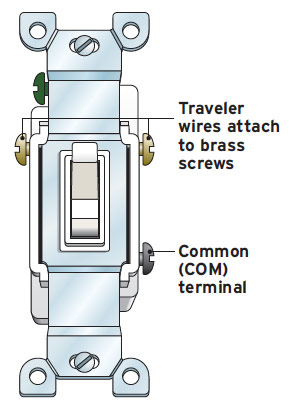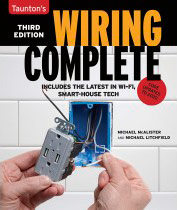Making Up a Three-Way Switchbox
Strip the sheathing from the cable and then wire the switch (or switch loop) following these step-by-step directions.

Three-way switches allow you to operate a light from two locations. They’re often used at the top and bottom of a set of stairs or at two entrances to a room. If you get confused about which wire goes where, make a drawing of your own. See this wiring article for some clear illustrations of how a 3-way circuit looks.
In new wiring, wires are roughed in when the framing is still exposed. Here, 12/2 and 12/3 cables were fished in to feed a three-way switch that was added after the drywall was up.
After stripping sheathing from the 12/2 cable, strip the 12/3 cable. Removing 12/3 sheathing is a little different: Start by lightly scoring the 12/3 cable along its length, up into the box 1. Then, when you reach the end of the cable, cut through the sheathing. Because you’ll soon be stripping the ends of individual wires, cutting through the sheathing end won’t compromise wire insulation.
Starting at the cut-through sheathing at the end of cable, pull the sheathing free of the wires within 2. The sheathing will separate easily along the scored line. At the cable’s upper end in the box, carefully cut free the sheathing.
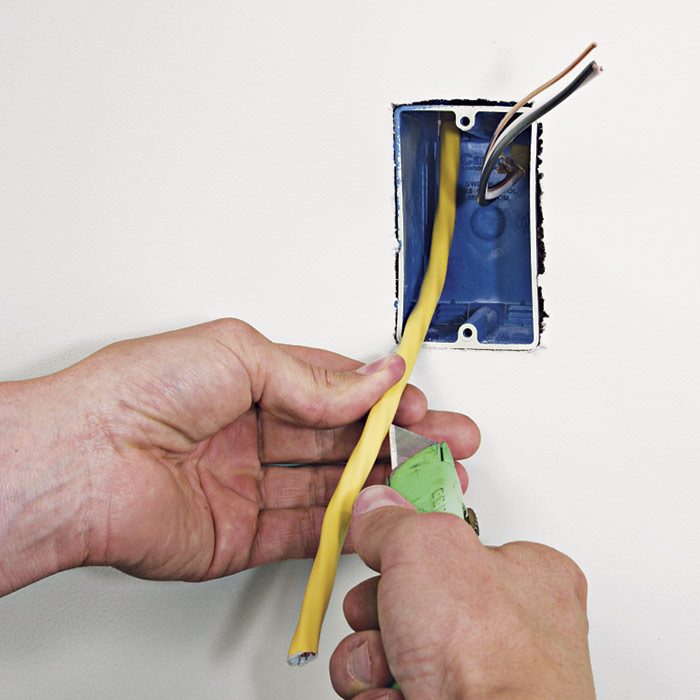 |
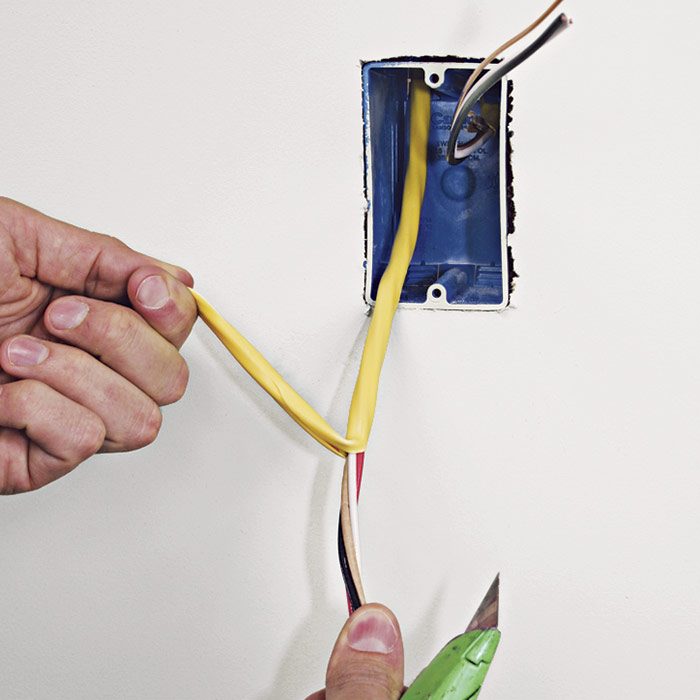 |
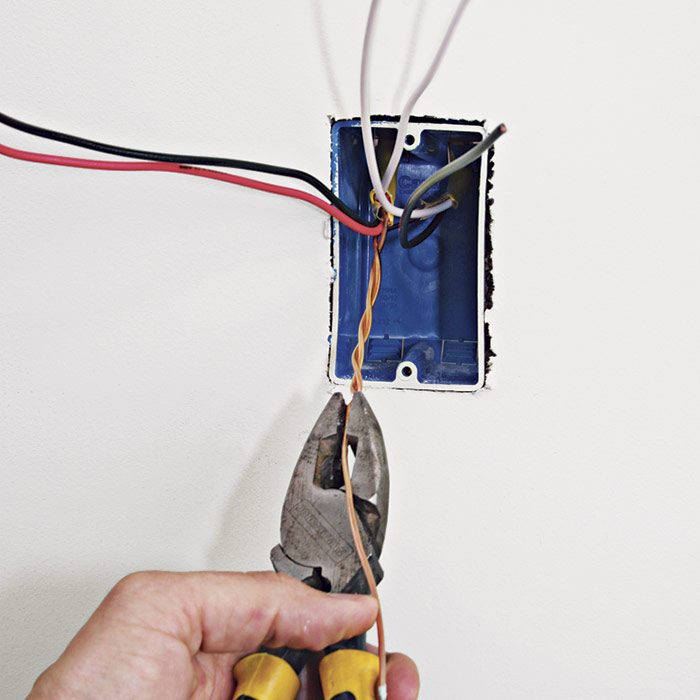 |
Twist together the ground wires before splicing them with a wire connector 3. To use a green wire connector, cut one of the leads shorter than the other so that it sticks out of the hole in the end of the wire connector. Then connect that ground lead to the switch’s green ground screw. Next, strip wire insulation from the neutrals, splice them, cap them with a wire connector, and push them into the box 4. (Neutrals don’t connect to standard switches.)
After professional electricians strip cable sheathing, many wrap individual wires in a distinct fashion so any other electrician will know which wires are travelers and which are switch-leg wires. Group and twist traveler wires clockwise, then wrap the switch-leg wire counterclockwise about the travelers. This way there’s no need to put tape or labels on the wires to identify them or to pull out all the cables and figure out which wire is what 5.
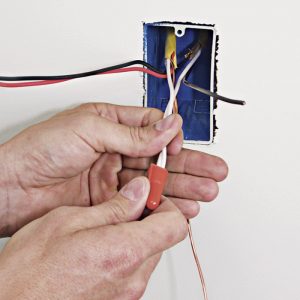 |
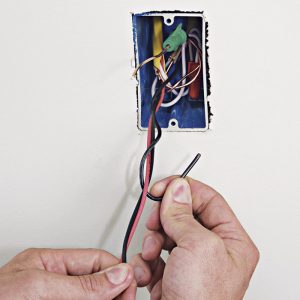 |
Wiring a Three-Way Switch
To wire a three-way switch, pull the conductors out of the outlet box. Unwrap the switch-leg wire from around the travelers and separate the wires so the travelers are on one side and the switch leg on the other 1. To strip wire ends, give the strippers a quick twist, use your thumb as a fulcrum to push the wire insulation off, and loop the wire ends 2.
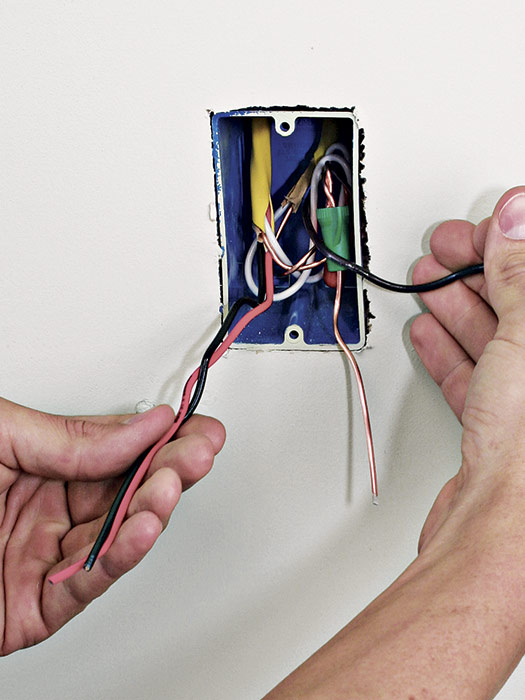 |
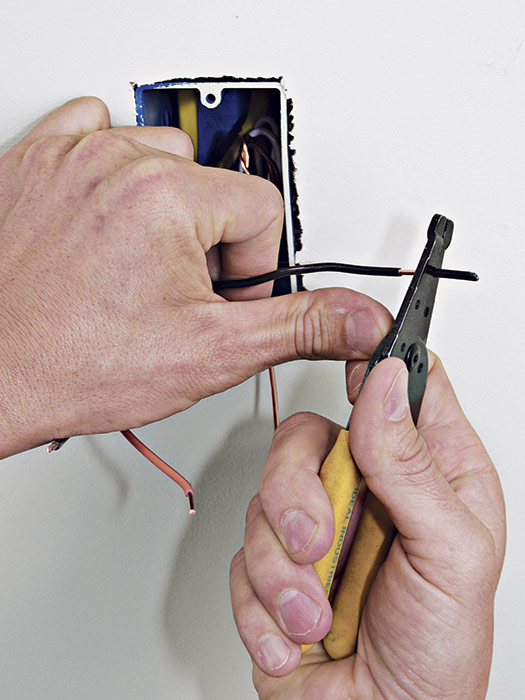 |
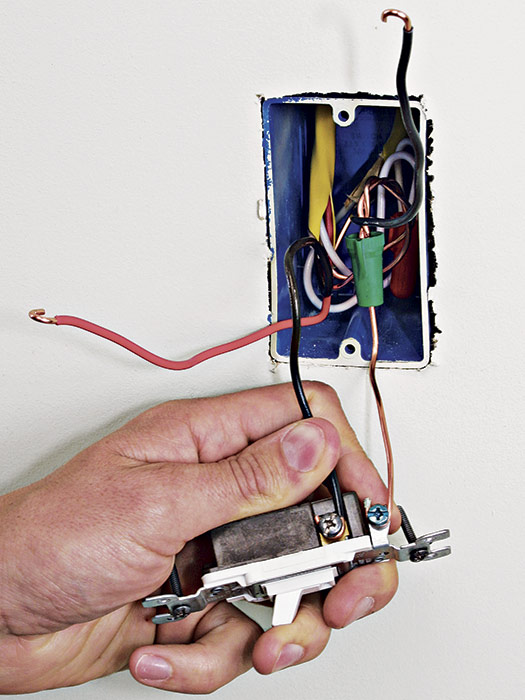 |
After attaching the bare ground wire to the green grounding screw on the device, attach the first traveler wire 3. Loop wires clockwise around the screw shafts, and they’ll be less likely to slip off when the screws are tightened. Flip the switch over and connect the second (red) traveler 4. (Note: It doesn’t matter which traveler wire goes where—you’ll still be able to turn lights off and on. The only critical connection is the common terminal.)
If you connect traveler wires in the same position on two three-way switches—say, you attach the red traveler to the first terminal, as just described—the lights will be off when switch toggles are both up or both down. This is a fine point and most people needn’t agonize about it: The three-way switches will still work as long as you attach traveler wires to traveler terminals.
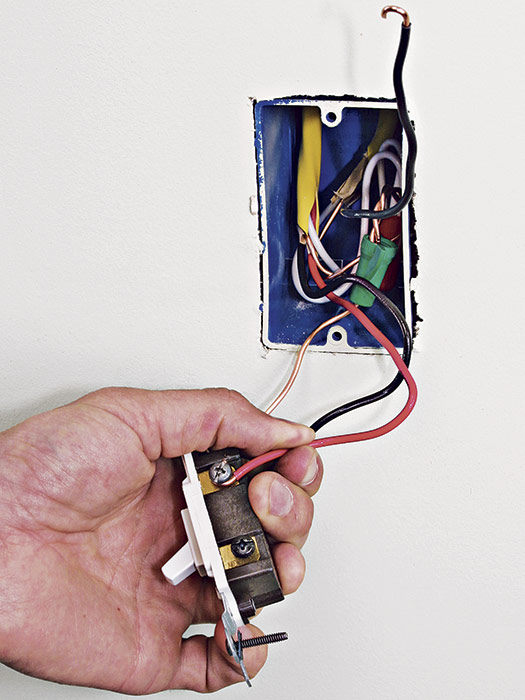 |
 |
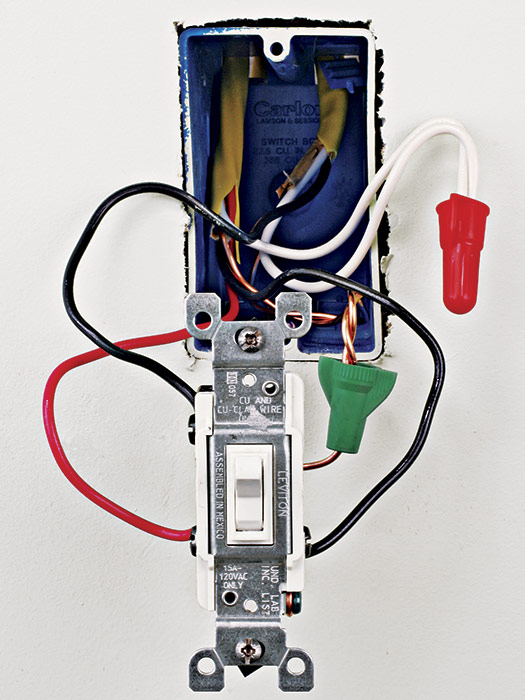 |
After attaching the second traveler, connect the hot conductor (switch leg or hot wire) to the common screw terminal, which is color coded black 5. Push the device into the box by hand, screw the device to the box, and install a cover plate.
Photo 6‚is a frontal view of the switch we just wired; it’s typical for a three-way that’s located between the power source and the light fixture it controls.
| PRO TIP: When replacing a defective or outdated three- or four-way switch, use a felt-tipped marker to note which wires connect to which switch terminal before disconnecting the wires. Of course, turn off power to the switch before you begin. |

Wiring a Three-Way Switch Loop
When an outlet or fixture box is closer to the power source than to the switch box, the wiring leg to the switch box is called a switch loop. When the switch is a three-way switch, a single 3-wire cable runs to it. In other words, the white wire taped black serves as a hot wire and runs from a splice in the fixture box, and the red and black wires are travelers. The white wire here is not a neutral; thus it is taped black to indicate that it is the hot conductor connected to the common terminal.
Excerpted from Wiring Complete, 3rd Edition (The Taunton Press, 2017) by Michael Litchfield and Michael McAlister
Available in the Taunton Store and at Amazon.com.

